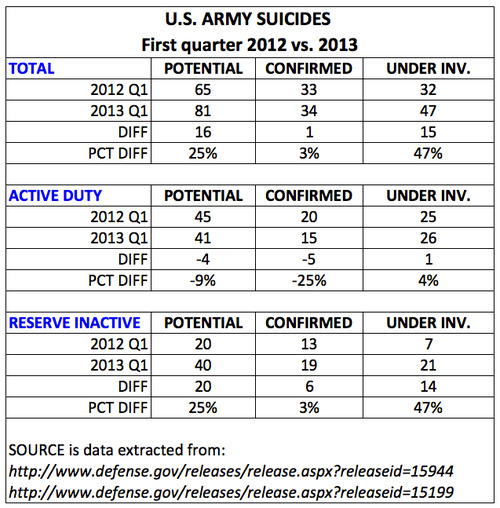While military suicides have risen to record numbers in recent years, combat deployments are not a major risk factor contributing to them, a new study published in Journal of the American Medical Association reports.
Men with depression, manic disorder or alcohol abuse issues were at greater risk, the study of 83 suicide cases from 2001 to 2008 showed.
‘The findings from this study are not consistent with the assumption that specific deployment-related characteristics, such as length of deployment, number of deployments, or combat experiences, are directly associated with increased suicide risk,” the report says. “Instead, the risk factors associated with suicide in this military population are consistent with civilian populations, including male sex and mental disorders.”
The authors concede that because their analysis only includes data through 2008, “we did not capture suicides in the most recent time period when the rates were the highest. However, the study did include the 3 years with the sharpest statistically significant increases in suicides.”
“It is possible that the cumulative strain of multiple and lengthy deployments only began to be reflected in suicide rates toward the later stages of the conflicts, although the overall evidence points to the lack of any specific deployment-related effects.”
The study was funded by the Department of Defense.
The New York Times has a good summary of the study’s findings, as well as feedback. The full paper is embedded below.



